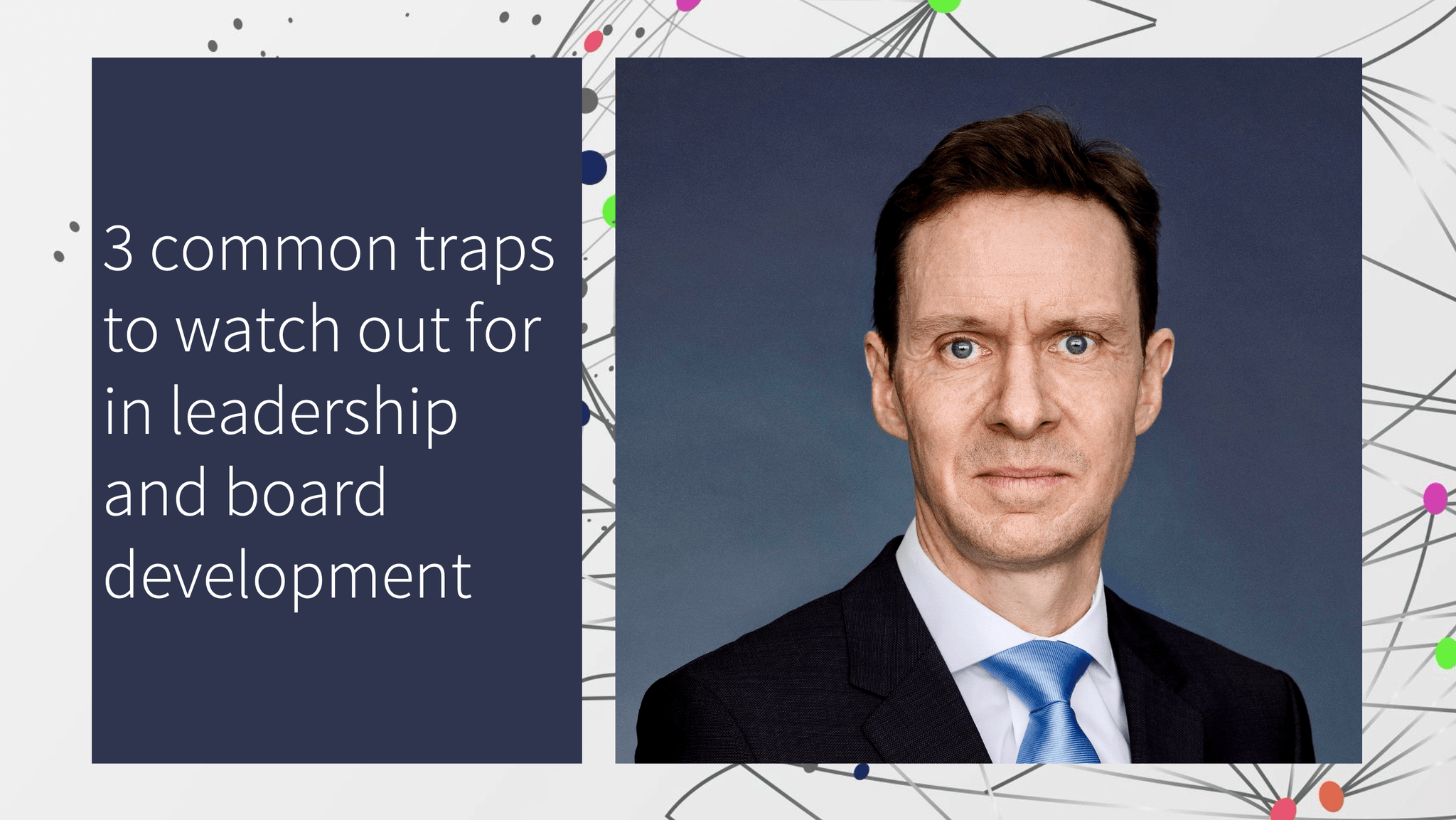27.04
HOW TO MOST EFFECTIVELY AVOID SHORTCUTTING, STEREOTYPING, AND SUBJECTIVITY IN LEADERSHIP AND BOARD DEVELOPMENT
In the high-stakes world of leadership and board governance, the pressure to make quick decisions, identify “high potentials,” and build effective teams can lead even the most experienced CEOs and board chairs to fall into the traps of shortcutting, stereotyping, and subjectivity which – though often unconscious – can undermine the long-term success of the organisation by sidelining diverse talent, reinforcing homogeneity, and leaving blind spots unaddressed.

Leadership and board development are not just HR or compliance functions – they are strategic imperatives. The quality, composition, and development of leadership and board are among the most significant levers for future-proofing the business. But when bias creeps in, it not only limits opportunity – it limits performance and resilience.
Common traps to watch out for
Shortcutting: Fast-paced decisions can favor candidates who "feel right" rather than those who truly align with the competencies needed for the role. Over-relying on gut instinct or informal endorsements can accelerate decision-making – but at the cost of rigor, fairness, and effectiveness.
Stereotyping: Assumptions based on age, gender, ethnicity, background, or even professional style often influence how individuals are perceived in terms of potential or "fit." This limits diversity of thought and can subtly reinforce status quo dynamics.
Subjectivity: When assessments are based on vague or ill-defined criteria, personal preferences or interpersonal chemistry can overpower objective evaluation. Without structured frameworks, subjectivity clouds judgment and impedes merit-based development.
Five types of bias CEOs and board chairs chould pay special attention to
Affinity Bias: Favoring individuals who share similar backgrounds, experiences, or perspectives.
Confirmation Bias: Looking for evidence that supports pre-existing beliefs about a candidate’s potential or limitations.
Performance vs. Potential Bias: Holding underrepresented leaders to higher performance standards while assessing others on future promise.
Halo/Horns Effect: Letting one strong or weak trait dominate the overall evaluation of a person.
Similarity Bias in Succession Planning: Reproducing current leadership models by unconsciously selecting successors who mirror current leaders.
Strategies for reducing bias and building better leaders and boards
Invest in structured and transparent processes: Adopt clear, role-specific criteria for leadership and board development. Use structured interviews, calibrated evaluation rubrics, and consistent documentation to enable objectivity. Ensure that succession plans and development pathways are based on observable behaviors and outcomes – not “gut feel” or informal endorsements.
Diversity decision-making panels: Include multiple perspectives in promotion, succession, and board selection discussions. Diverse panels are more likely to spot bias, challenge assumptions, and mitigate affinity-based decisions.
Use a data-backed methodology and tools to identify talent others overlook: Use tools that assess behavior, motivation, cultural alignment, personality, as well as other capabilities and soft skills and thus provide a holistic picture of a candidate and reveal hidden potential. Do not over-rely on resumes, track record, and hard skills – that should of course be taken into account, but to capture the full potential of the candidate, and identify talent that others overlook, it is much more relevant to uncover the soft skills that might make the real difference in an everyday context.
Embed bias awareness and developmental mindsets: Bias training is not a silver bullet, but regular reflection on how bias shows up in leadership development can raise awareness and accountability. Pair this with a growth mindset culture, encouraging potential over perfection and development over pedigree.
Broaden the definition of leadership potential: Many leadership frameworks still overemphasize traits like extroversion, decisiveness, or assertiveness. Instead, look for agility, learning capacity, inclusive behavior, and systemic thinking – especially important in today’s dynamic and stakeholder-driven environment.
Regularly audit the leadership and board pipeline: Ask critical questions like: Who gets visibility, sponsorship, and stretch roles? Who is overlooked? Do our succession plans reflect our future strategy and the global trends – or our past preferences and yesterday's worldview?
Be bold, inclusive, and strategic
Boards and executive teams that resist shortcutting, stereotyping, and subjectivity don’t just create fairer systems – they build smarter, more adaptive organisations that are typically less hierarchical, and more heterogeneous, and where the DNA is centered around a fundamental belief that people and teams who thrive and are in balance function better and thus deliver stronger results. The future of leadership depends not only on who we choose, but how we choose them. And that process must be as bold, inclusive, and strategic as the leaders we hope to develop.
